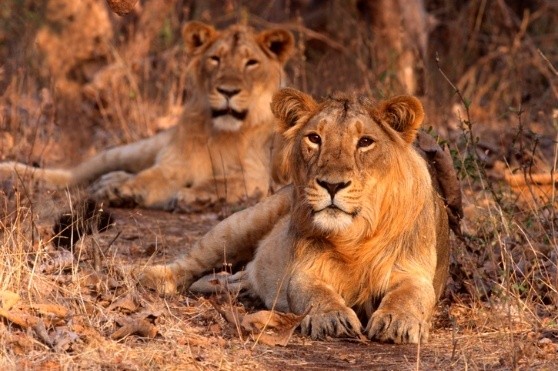- Courses
- GS Full Course 1 Year
- GS Full Course 2 Year
- GS Full Course 3 Year
- GS Full Course Till Selection
- Online Program
- GS Recorded Course
- NCERT (Recorded 500+ Hours)
- Polity Recorded Course
- Geography Recorded Course
- Economy Recorded Course
- AMAC Recorded Course
- Modern India, Post Independence & World History
- Environment Recoded Course
- Governance Recoded Course
- Science & Tech. Recoded Course
- International Relations and Internal Security Recorded Course
- Disaster Management Module Course
- Ethics Recoded Course
- Essay Recoded Course
- Current Affairs Recoded Course
- CSAT
- 5 LAYERED ARJUNA Mentorship
- Public Administration Optional
- ABOUT US
- OUR TOPPERS
- TEST SERIES
- FREE STUDY MATERIAL
- VIDEOS
- CONTACT US
PLACES IN NEWS - 19 Oct. 2024
PLACES IN NEWS - 19 Oct. 2024
19-10-2024
Kaziranga National Park emerges as India's second butterfly diversity hub with 446 species
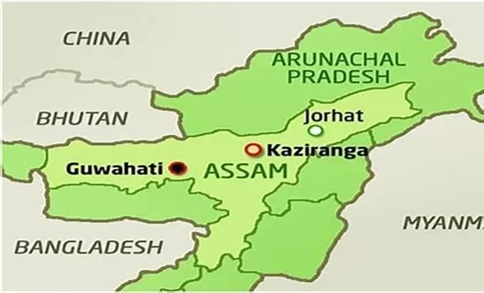
- Species Count: Kaziranga now hosts 446 butterfly species, ranking it second in India (after Namdapha National Park).
- Research: Discovery led by Dr. Monsoon Jyoti Gogoi.
- Event: First "Butterfly Conservation Meet-2024" held from Sept 27-29; attracted about 40 attendees from various institutions.
- Highlights:
- Presentation by Gaurab Nandi Das on butterfly taxonomy.
- 85 butterfly species observed during the meet.
- Launch of a new pictorial guidebook documenting the 446 species, including 18 new records for India.
- Significance: Kaziranga's butterfly diversity is notable given its location outside the Himalayan and Patkai ranges.
- Conservation Focus: The meet emphasizes the importance of butterfly conservation, alongside traditional conservation efforts for the "Big Five" wildlife in the park.
About Kaziranga National Park:
- Location: Partly in Golaghat and Nagaon Districts, Assam, India.
- Size: Covers 430 sq km along the Brahmaputra River (north) and Karbi Anglong hills (south).
- Rivers: The river Diffalu, a tributary of the Brahmaputra, flows through the National Park area (core/critical tiger habitat), while another tributary, Moradifalu, flows along its southern boundary.
- Established: Declared a National Park in 1974; a UNESCO World Heritage site ( 1985).
- Wildlife: Home to the largest population of the Great Indian one-horned rhinoceros, along with tigers, elephants, and numerous bird species.
- Landscape: Features forests, tall elephant grass, marshes, and shallow pools.
Accessibility
- Transportation:
- Highway: National Highway 37 runs through the park.
- Air: Nearest airports are Salonibari Airport (Tezpur, 80 km) and Lokapriya Gopinath International Airport (Guwahati, 130 km).
- Rail: Trains from Guwahati to Nagaon (2-3 hours).
- Road: Well-connected to Guwahati; buses available.
Conservation Significance
- Habitat: Key area for species like Asiatic wild buffalo, swamp deer, and Ganges dolphins.
- Biodiversity: An Important Bird Area recognized by Birdlife International.
Historical Context
- Previously known for frequent floods and limited wildlife; now recognized for rich biodiversity and conservation efforts.
PM Modi, Xi at BRICS summit in Russia as Delhi and Beijing announce visits
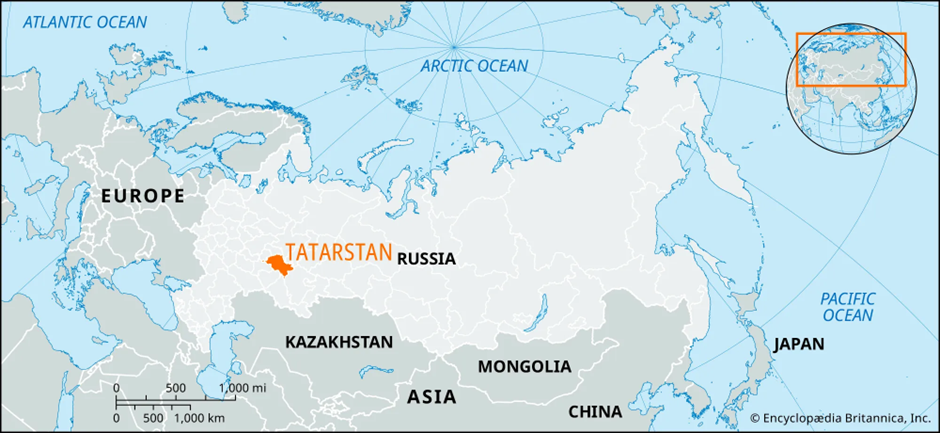
- Prime Minister Narendra Modi will visit Russia from October 22-23 at the invitation of President Vladimir Putin to attend the 16th BRICS Summit in Kazan, capital of Tatarstan.
- This will be the Prime Minister’s 2nd visit to Russia this year — he visited Moscow for a bilateral summit on July 8-9.
- During his visit, Modi is expected to hold bilateral meetings with his counterparts from BRICS member countries and leaders invited to Kazan.
- While Modi is going to have a bilateral meeting with the Russian President, all eyes are on a possible bilateral meeting between Modi and Xi on the sidelines of the summit.
- The theme of this year’s summit is ‘Strengthening Multilateralism for Just Global Development and Security’
Madhya Pradesh to Declare Ratapani as 8th Tiger Reserve Near Bhopal
- Announcement: Madhya Pradesh to declare Ratapani Wildlife Sanctuary as its 8th Tiger Reserve.
- Location: 60 km from Bhopal, making it the first tiger reserve near a state capital in India.
- Area: Covers 1,270 sq km, including Ratapani Wildlife Sanctuary and Singhori Sanctuary.
- Core Area: 763 sq km designated for tigers.
- Buffer Zone: 507 sq km for wildlife protection.
Background
- Initial Approval: National Tiger Conservation Authority (NTCA) approved the reserve in August 2008.
- Recent Efforts: Current government administration accelerated the process, urged by Union Environment Minister.
- Formal Declaration: Expected by October 31; new administrative team to be in place by November 15.
Wildlife
- Current Population:
- Approximately 56 tigers.
- About 70 leopards.
- Diverse herbivore species.
- Biodiversity Importance: Essential for conservation in central India.
Conservation Efforts:
- Human-Animal Conflict Prevention: Plans to construct underpasses to reduce animal fatalities on railways.
- Commitment: State government prioritizes both wildlife safety and local community welfare.
Significance
- Wildlife Conservation Milestone: Represents collaboration among government officials, environmentalists, and conservation authorities.
- Future Impact: Aims to enhance the protection and growth of the tiger population in Madhya Pradesh.
Migrant labourer from Bihar found dead near Rambiara river in Kashmir's Shopian district
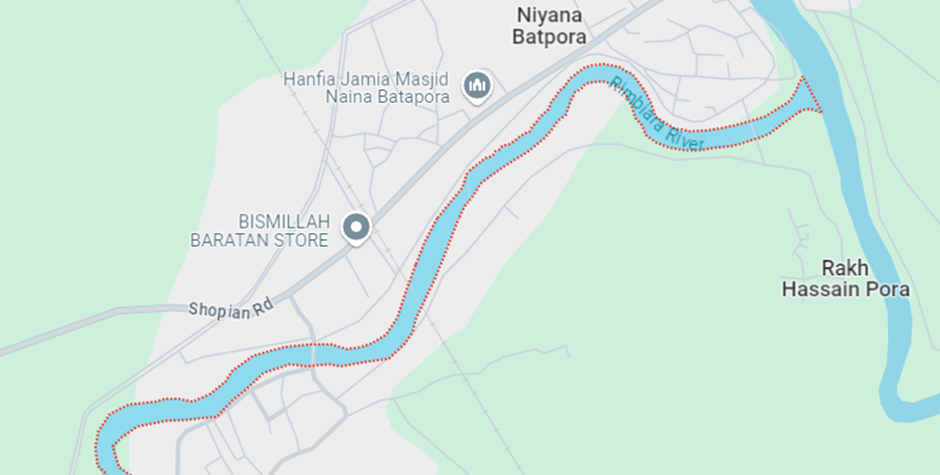
- Incident: Body of a 30-year-old migrant laborer from Bihar, found near the Rambiara river in Shopian district.
- Targeting of Migrants: This incident marks the first suspected militant attack on a migrant worker since the new government took office.
- Recent Violence: Two non-local laborers were killed by militants earlier this year. An army soldier was also found dead after being abducted in Anantnag district.
About Rambi Ara river:
- Rambi Ara is a river and tributary to the River Jhelum located in Shopian District in the union territory of Jammu and Kashmir.
- It joins the Veshaw River near Sangam in Anantnag District before the confluence finally meets the Jhelum.
- Source: confluence of two streams, "RUPRI NAR" and "YANGA NAR",rising in high altitude lakes and snow covered peaks and glaciers in the rupri ridge of the PIR PANJAL & NABA PIR PASS.
- The Rambi Ara is known for fluctuating water levels and is often affected by flash floods.
Ukraine Drone Attack in Tver Region
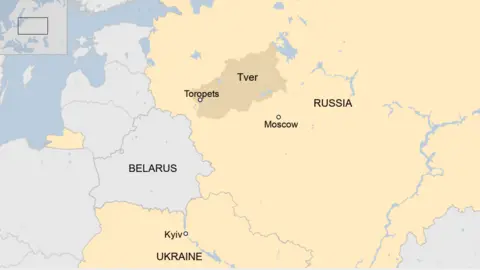
- Event: Ukrainian drone attack caused a fire and partial evacuation in Russia's Tver region.
- Location: Fire occurred in Toropets, a town with a population of just over 11,000, northwest of Moscow.
- Response:
- Igor Rudenya, governor of Tver, reported that firefighters were attempting to contain the blaze.
- Russian air defense units engaged in efforts to repel a "massive drone attack."
Additional Attacks
-
Other Regions Affected:
- Smolensk region: Seven Ukrainian drones destroyed, according to Governor Vasily Anokhin.
- Bryansk region: Fourteen drones downed.
- Oryol and Tula regions: Several additional drones destroyed.
About Tver Region:
- Location: Administrative center of Tver Oblast, western Russia, at the confluence of the Volga and Tvertsa rivers.
Historical Background:
- First Mention: Dates back to 1134–35, initially under Novgorod.
- Key Events:
- Became part of the Principality of Vladimir-Suzdal in 1209.
- Capital of the Principality of Tver from 1246.
- Organized a failed uprising against the Tatars in 1327.
- Annexed by Moscow in 1485.
Economic Development
- Crafts Center: Notable in the 14th and 15th centuries for craftsmanship.
- River Trade: Gained importance with the Vyshny Volochok canal system (1703–08), linking the Tvertsa and Msta rivers.
- Modern Economy:
- Major flax-growing region.
- Industrial center focusing on textile manufacturing and railroad rolling stock production.
Urban Layout and Restoration
- City Layout: Designed in a gridiron pattern in the 18th century; several historic buildings remain.
- World War II Impact: Severely damaged when occupied by Germans in 1941, but buildings were restored afterward.
Name Change: Historical Name: Renamed Kalinin in 1931 after revolutionary leader Mikhail Kalinin; reverted to Tver in 1990.
Population: Estimated Population: Approximately 405,618 (2006).
Must Check: Best IAS Coaching In Delhi
UPSC Prelims Result 2024 Out: Expected Cut Off & Other Details, UPSC Prelims 2024 Answer with Explanation, Daily Prelims Quiz, Daily Current Affairs, MONTHLY CURRENT AFFAIRS TOTAL (CAT) MAGAZINE, Best IAS Coaching Institute in Karol Bagh, Best IAS Coaching Institute in Delhi, Daily Mains Question Answer Practice, ENSURE IAS UPSC Toppers, UPSC Toppers Marksheet, Previous Year Interview Questions, UPSC Syllabus
PLFS 2025: Monthly Jobs Data, Bigger Survey
PLFS 2025: Monthly Jobs Data, Bigger Survey


